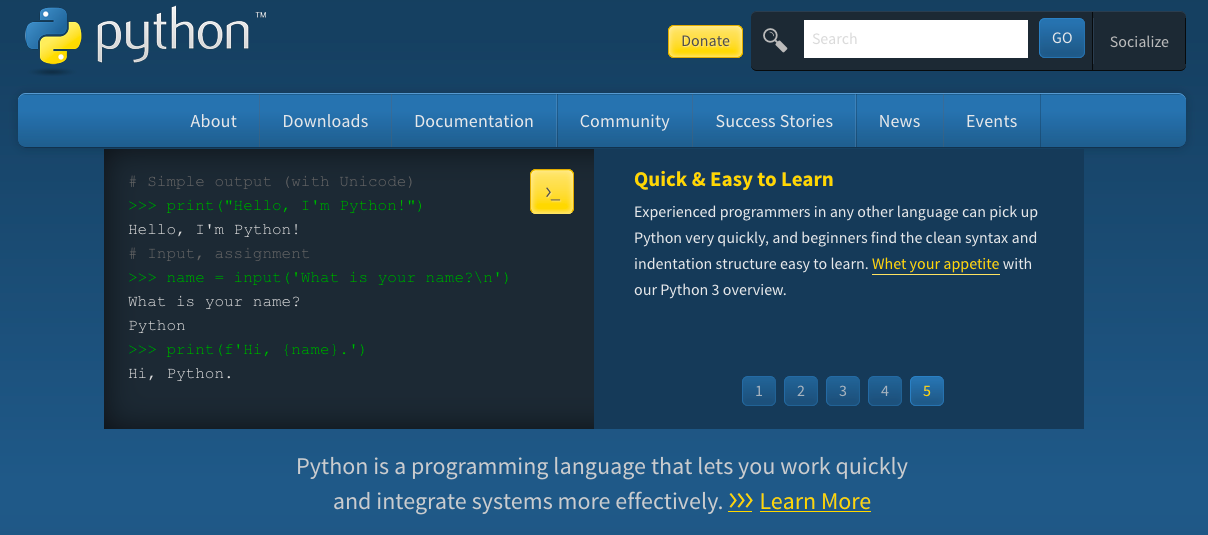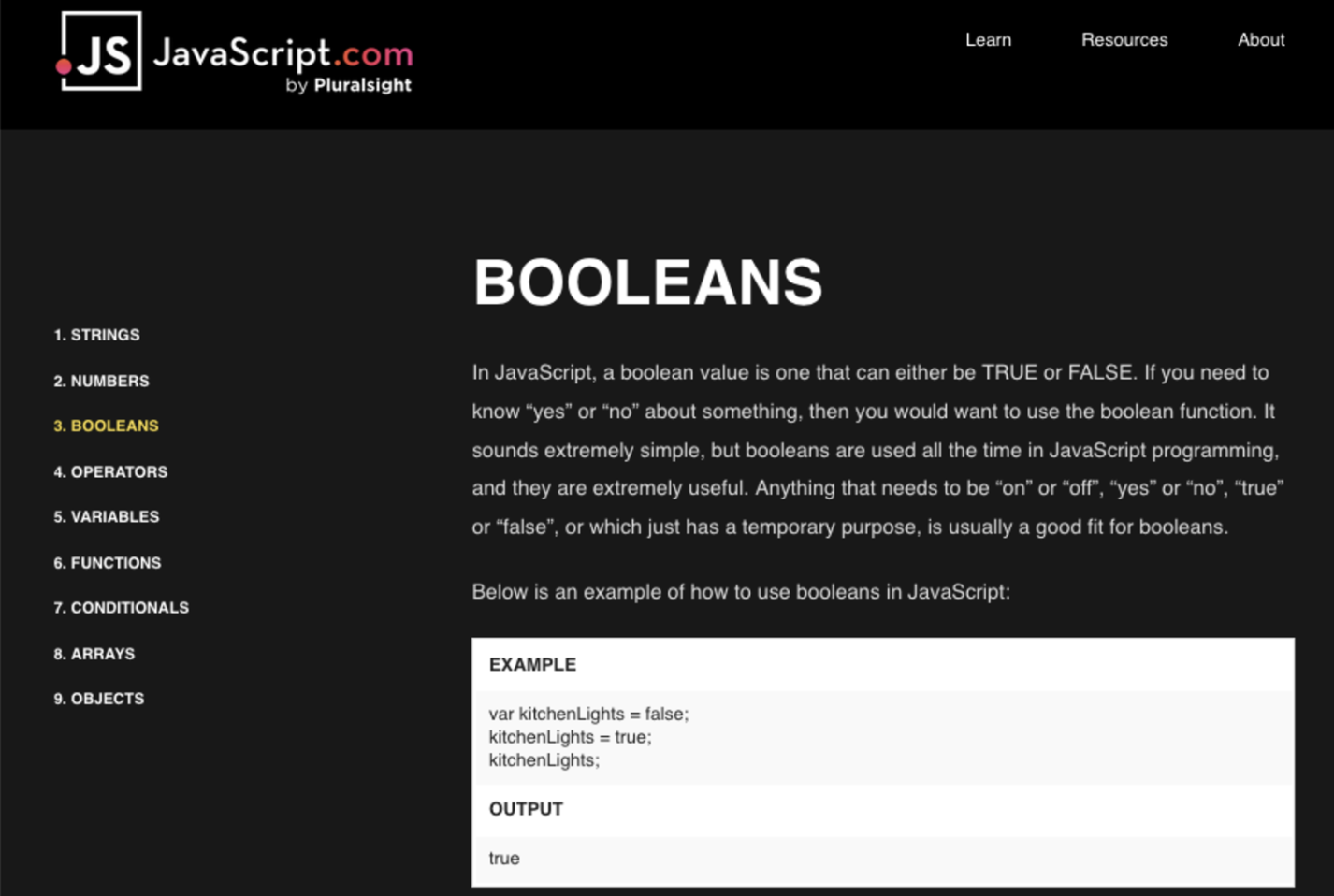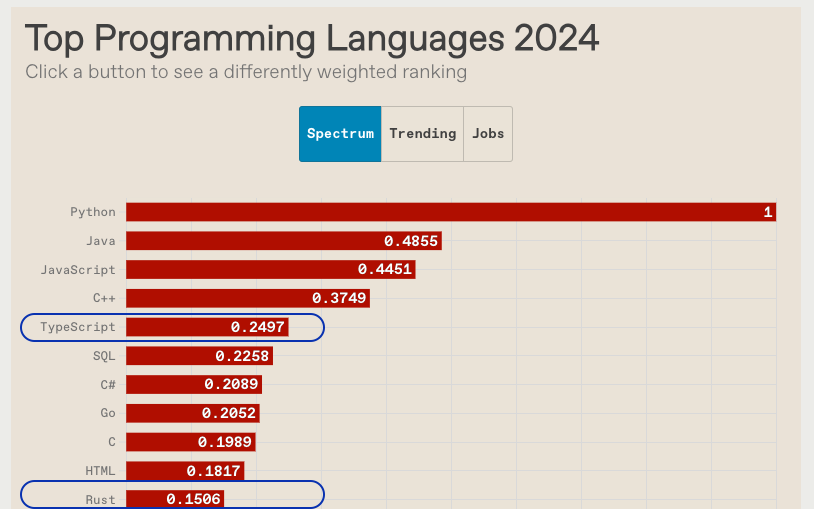Are programming languages required for programmatic SEO? Here, we take a look at the top programming languages being used by SEO experts and help you decide.
What Programming Languages Do I Need For Programmatic SEO?


Are programming languages required for programmatic SEO? Here, we take a look at the top programming languages being used by SEO experts and help you decide.
Are programming languages required for effective programmatic SEO? Not if you have the right technology by your side. CMAX makes programmatic SEO accessible without advanced coding, streamlining complex processes to drive impactful results effortlessly.
Programmatic SEO is the ultimate power boost for your content creation efforts.
Through the use of AI and machine learning, you can generate a large number of SEO-focused pages, targeting high-intent, niche search queries that match the intent of your audience very closely. Rather than focusing on generic “head” keywords (like “athletic shoes”), programmatic SEO enables brands to target precise, specific terms such as “women’s pink running shoes size 8.”
If you cover specialized keywords – including location-specific terms like “men’s bespoke suits in London” or “vintage clothing stores in San Francisco” and “best hair stylist in Los Angeles” – your business can attract niche audiences who are further along in the decision-making process, thereby increasing the likelihood that they’ll spend money on what you’re selling.
These niche markets aren’t as packed with competitors too, so you can maximize your SEO budget while getting great results, even if you spend less than big-budget brands.
But here’s the thing – jumping into programmatic SEO without a solid foundation in traditional SEO is a bit like putting the cart before the horse. You’ll want to get the basics right first:
These traditional SEO principles make sure your programmatic strategies meet the mark. And, once your SEO foundation is solid, it could be helpful to understand the technical side to implement everything effectively.
This often involves leveraging certain programming languages, though the choice depends on your team’s skills and project needs.
Programmatic SEO is all about using automation to streamline repetitive tasks that require a lot of time and manual effort.
If you’re looking to harness its full potential, it could be beneficial to understand programming languages that can help build commands and scripts to automate and scale SEO processes. Programming languages like Python, JavaScript, SQL, R, PHP, Ruby and even HTML/CSS are used by some as core tools in laying the groundwork for sustainable, adaptable growth in SEO.

Python has established itself as a powerhouse in programming, and there’s a good reason why SEO professionals love it. Its strengths in data manipulation, automation and machine learning make it the ideal tool for SEOs who need to process and manage vast amounts of data across multiple campaigns.
With Python, SEO teams can automate repetitive tasks, refine data analysis and respond instantly to shifts in SEO requirements. No need to stop and compile code every time you want to test a change – Python’s flexibility lets you tweak and iterate in real-time, which is crucial for high-stakes SEO where every minute counts.
For programmatic SEO, experts can use Python to perform data extraction, analysis and updates at scale, keeping content sharp and performance top-notch. Its data manipulation skills are perfect for keeping your SEO strategies dynamic and results-focused, ensuring that your content is always ready to keep up with the latest trends.
Python has the necessary toolkit to handle massive SEO projects with ease.
Frameworks like BeautifulSoup and Scrapy make web scraping more efficient, allowing SEO teams to quickly gather data from multiple pages. This data can then be transformed into crucial insights, giving direction to content tailored for search performance.
And when it’s time to crunch numbers and analyze performance, the Pandas library helps manage and manipulate huge datasets, making keyword research much easier.
SEO involves a lot of repetitive tasks that are both tedious and error-prone. Many SEO routines, like verifying hreflang tags, checking robots.txt and updating large URL lists, can eat up hours that would be better spent on strategy. Fortunately, Python scripts handle these operations automatically, reducing the risk of manual errors getting in the way of your success.
On a larger scale, Python even powers the automated creation of SEO-optimized content. By combining templates with data, it’s able to produce thousands of landing pages – a hallmark of effective programmatic SEO, where scalability and precision are essential.
Integrating APIs through Python is a fast track to efficient, high-impact processes. When you directly connect with APIs such as Google’s Indexing API, Python speeds up the process of getting fresh content indexed, ensuring your new and updated pages are visible to search engines without the usual delays.
Moreover, Python can automate keyword research by pulling comprehensive data from SEO tool APIs. Thanks to this, you can quickly gather and organize keyword trends and search insights, drawing from sources like Google Autocomplete to reveal what your audience is searching for in real-time.

When it comes to optimizing a website’s interactivity and user experience, JavaScript is one of the key players behind the scenes. Over 94% of websites rely on JavaScript (Source: Gitnux), and for good reason: it powers the dynamic, responsive elements that keep users engaged and coming back for more.
Having a fast and stable website is essential, and Google knows this. That’s why SEO experts have to comply with the search engine’s Core Web Vitals metrics, like Largest Contentful Paint (LCP) and Cumulative Layout Shift (CLS), which are essentially indicators of how enjoyable and seamless a website feels.
A strong performance here directly correlates with better engagement and higher search rankings, since Google is likely to reward a website that users value and trust.
JavaScript optimizations, like lazy loading and asynchronous resource loading, are crucial in this equation.
JavaScript frameworks like React and Vue are game-changers for blending SEO with a smooth user experience. These frameworks offer tools like server-side rendering (SSR) and pre-rendering, which serve essential content upfront in the HTML response. This helps search engine crawlers see what they need without sacrificing interactivity.
If you want your JavaScript content to make a difference in your SEO, it has to be easy for search engines to crawl and index. Here are some best practices to follow:
In SEO, data is everywhere. We’re talking about mountains of it – from Google Analytics to Search Console and server logs – often in quantities that make spreadsheets like Excel feel sluggish. This is where SQL can be a huge asset, giving SEOs the power to efficiently manage and query millions of records without slowing down.
Across industries, from finance and healthcare to e-commerce, SQL’s precision in data handling transforms data into actionable insights. In SEO, this means you can streamline complex queries to find out exactly which keywords are driving traffic, which pages need optimization and where the real opportunities for conversion lie.
Using SQL as a foundation, you can help your programmatic SEO strategy gain a data-driven edge in analyzing search data, producing detailed reports and answering critical questions.
Whether you’re aggregating keyword insights or filtering page performance data, SQL’s versatility allows for in-depth analysis of user behavior and keyword effectiveness, allowing you to align your actions with real-time trends and audience needs.
For log file analysis, SQL-based platforms like Google BigQuery offer precise views into metrics such as crawl frequency, response codes and site engagement. These insights allow SEO teams to fine-tune content relevancy, address technical issues promptly and optimize site structure for better visibility.
When it comes to creating tailored SEO reports, SQL is one of the most powerful tools out there.
It allows SEO teams to pull data from various sources through queries, which streamlines routine reporting duties and minimizes human error. Thanks to this, your team can start focusing more on strategic decision-making rather than getting bogged down by manual data aggregation.
Furthermore, SQL also lets you dig into user behavior to build segments and target your audience in ways that actually matter. Because of this, you can make your content strategies sharper and more personalized – and therefore more impactful in promoting your business.
Learning Rust and TypeScript can be transformative for anyone in programmatic SEO or related fields, especially as SEO demands become more complex and data-heavy.
These two relatively new languages are making waves, quickly rising in popularity in 2024.

Source: IEEE Spectrum
These languages are great to include in your ecommerce programmatic SEO strategy, offering greater control, stability and flexibility, enabling your platform to scale and adapt effectively.
Rust is all about blending high performance with memory safety, which is perfect for building strong, efficient SEO infrastructure.
Unlike some of the older programming languages out there, Rust was designed to cut down on memory leaks and bugs – problems that can throw off large-scale SEO operations. With programmatic SEO, you need tools that can handle tons of data quickly and accurately, and Rust gives you that stability.
Security is a big deal for programmatic SEO platforms that handle sensitive data. Here, languages like Rust and TypeScript really shine.
When used together, Rust and TypeScript help SEO platforms handle sensitive data with advanced safeguards, providing a security-first foundation as things start to scale.
Keeping up with new trends in programming is key for SEO teams that want to stay competitive and adaptable.
Learning languages like Rust gives you the tools to build strong, future-ready systems that can handle the constant change that you have to deal with in the SEO industry. And, if you add TypeScript to the mix, you can bridge the gap between frontend and backend development, making collaboration between your teams a lot smoother.
Are you having trouble deciding on the right programming language for your needs? To guide your decision, we’ve put together a table that breaks down the strengths and limitations of each language commonly used in SEO.
| Programming Language | Strengths | Weaknesses |
| Python | – Highly versatile, ideal for data manipulation and automation – Extensive libraries (e.g., BeautifulSoup, Pandas) for web scraping, data analysis, and machine learning – Interpreted language, allows quick testing and debugging – Strong API integration capabilities for faster SEO workflows |
– Slower execution compared to compiled languages – Limited for complex, high-performance tasks, especially in resource-intensive environments |
| JavaScript | – Supports dynamic, interactive content, enhancing user experience and engagement – Over 94% of websites use JavaScript, ensuring compatibility – Frameworks (e.g., React, Vue) improve search engine crawler interactions – Optimizes Core Web Vitals (e.g., LCP, CLS) through lazy and asynchronous loading |
– Requires careful configuration for SSR or pre-rendering to ensure SEO effectiveness |
| SQL | – Efficient for handling and querying large datasets, essential for data-driven SEO strategies – Allows advanced segmentation and targeting for granular insights – Supports automation for reporting and custom analysis, saving time and reducing errors |
– Limited for frontend SEO tasks – Less flexible for real-time, dynamic data interactions compared to JavaScript and Python |
| Rust | – Focuses on memory safety and high performance, ideal for backend SEO systems and large data volumes – Strong in system-level security, prevents vulnerabilities like data races – Reduces risk of memory leaks and common bugs, increasing reliability |
– Steeper learning curve due to complex syntax – Limited library ecosystem compared to Python and JavaScript, particularly in SEO-specific tools |
| TypeScript | – Type-safe, reducing runtime errors and enhancing code maintainability – Strong integration with JavaScript, ideal for web-based SEO applications – Enhances security and collaboration between frontend and backend teams |
– Primarily useful in frontend SEO tasks – Adds additional compilation steps, which may slow down development without proper tooling |
Learning programming languages is easier than ever, especially for SEO pros, thanks to AI. Today’s AI-driven tools can give you real-time feedback, smart coding suggestions and even a custom learning experience, letting you build essential programming skills without all the guesswork.
To make your choice simpler, we’ve lined up a comparison of six powerful AI-powered coding companions that can fast-track your learning.
| Your AI-Powered Coding Companions for Programmatic SEO |
| Platform | What It Does | How It Helps You Learn | Perfect For | Cost |
| GitHub Copilot | Context-aware code suggestions powered by OpenAI Codex, tailored to your coding style. | Real-Time Code Suggestions: Learns your style and fills in code as you type.
Copilot Chat: Ask questions about syntax and get instant help! |
Automating SEO tasks with Python or creating interactive JavaScript | Free trial, then subscription |
| Tabnine | AI-powered code assistant supporting 25+ languages with total code privacy and no data retention. | Personalized Completions: Learns from your team’s code, so suggestions fit your projects.
Code Privacy: Keeps your code safe and confidential. |
Writing secure SEO scripts with Python or SQL, working in teams | Free plan; paid options |
| Amazon CodeWhisperer | Generates code based on existing code or comments, with built-in vulnerability scanning for secure coding. | Secure Coding Help: Alerts you to vulnerabilities, teaching safe practices.
Contextual Suggestions: Writes lines of code based on what you’re already typing. |
Learning secure coding practices, automating SEO with Python | Free for individuals; paid plans |
| Replit Ghostwriter | Real-time code explanations and completions in an online IDE, supporting collaborative coding. | Live Code Feedback: Get explanations and completions in real time.
Multiple Language Support: Practice JavaScript, Python, and more while collaborating in Replit. |
Hands-on SEO coding with friends or teams, exploring interactive SEO | Free plan; paid options |
| Codex by OpenAI | Advanced code generator using natural language for complex programming tasks and real-time debugging. | Speak Code: Just type what you want to do in plain English, and Codex writes the code!
Instant Debugging: Solves problems and optimizes complex scripts. |
Building advanced SEO scripts or custom SEO templates | Paid |
| ChatGPT | AI-driven conversational assistant for code support, problem-solving, and project planning across multiple languages. | Conversational Help: Ask anything about code structure, syntax, or SEO applications.
Project Advice: ChatGPT explains concepts or creates code from scratch for you! |
Troubleshooting, learning basics in Python or SQL for SEO | Free & paid plans |
Unlike a lot of misguided SEO strategies that require coding know-how, CMAX™ cuts out the complexity. Our proprietary platform is designed to bypass the usual headaches in programmatic SEO by making implementation smooth and straightforward – no intricate coding skills needed, no massive system changes required.
Once CMAX is live, you’re set. No more managing countless pages or worrying if every piece aligns with your brand voice when it’s meticulously based on controlled training data.
Moreover, this platform is an adaptive system, always optimizing and refining itself. With its self-learning capabilities, CMAX tracks SEO trends and user engagement and continually enhances content performance as algorithms and user behaviors evolve.
CMAX allows for limitless growth on autopilot. Get in touch with us today and watch as hidden traffic opportunities turn into measurable business growth.